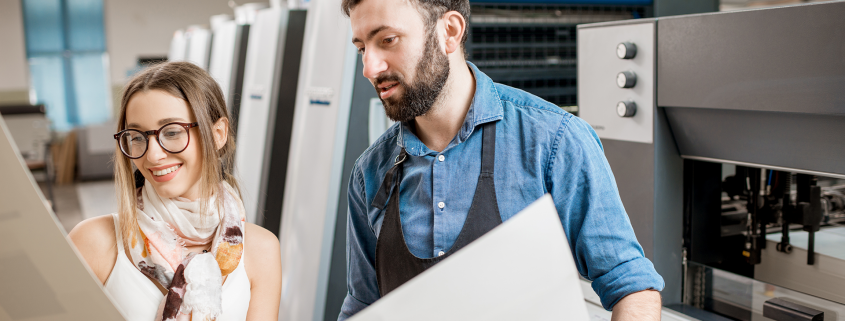Why Choose Giclee Prints?
The art world is a constantly evolving marketplace with ever-changing trends – it used to be that when an individual artwork was sold, that was it – it was gone! These days, however, there is a constantly expanding market for limited edition prints – the opportunity for more than one person to experience and own a piece of art and be able to purchase it at a more affordable price.
Here are a few facts and tips for artists to consider when looking to market their creations:
Reproduction prints
Any form of reproduction of an original artwork is referred to a ‘print’ – these can be created using a flat plate to create multiple copies of artworks in the forms of monotypes, lithographs, screenprints and such. These pieces produced through these traditional print production techniques are generally regarded as fine art prints.
Giclee prints
Differing in print materials from these ‘fine art’ prints, you can make prints of your original artwork through giclee (pronounced “zhee-clays”) printing. Giclee is a French term meaning “to spray” – large format inkjet printers use smaller spraying devices to produce high-quality prints from originals that both apply ink and match colour precisely. Not all inkjet printers, however, have this facility. To produce these high-quality print finishes, the camera or scanner used to capture the original image must have a high level of resolution – at least 300 dots per inch (DPI) in comparison to most digital photos which are captured at 72 DPI.
In addition to this high resolution, the ink and paper used to produce a giclee print must be of a quality classed as “archival” – this is usually achieved using pigment-based inks as opposed to the more usual dye-based options. The canvas or paper used for these reproductions must also be of a quality qualifying as “archival”.
Editions
There are different options for artists creating these giclee prints with regards to the type of ‘editions’ they produce, dependent upon the purpose for which they are to be marketed. ‘Open’ editions will create an unlimited number of prints to potentially provide a constant source of revenue for the artist – ‘limited’ editions are produced in a smaller, pre-defined number and once sold, no more can be created. This ‘scarcity’ aspect does, of course, make these limited edition prints more collectable and therefore more valuable.
Create A Print
Your printer will scan or photograph your original artwork to produce an artist’s proof – once you are happy with the quality of the image a production file is created for identical printing. If issuing limited edition prints, sometimes the original production file is destroyed to protect the ongoing integrity of the limited aspect of the print.
Quantity
How many you create is entirely a personal business decision – consider your requirements carefully and agree with the print company – before production – how many prints you want. The fewer editions the higher the sale price is likely to be – however, consider how many you can sell at the optimum price – you don’t want to sell all your copies and find demand was greater at the same price if you had created more! Establish what kind of customer to whom you are selling and what the demand may be at different price ranges for different quantities printed.
Pricing
The same considerations are required here – factor in aspects such as your current standing in the art arena, what the likely demand may be, the cost of producing the artwork prints and the number of prints you are creating, along with the all-important aspect of what profit you would, ideally, like to make!
Marketing
Consider what marketing outlets and opportunities you can use to sell your prints – depending on your ambitions and success you can consider exhibitions, art fairs through to appropriate retail wholesalers and more exclusive art galleries. Consider, perhaps, having your images licensed for advertising or merchandising opportunities.
Tracking
You should always track the movement and location of your prints – limited editions should be clearly numbered and where any sales were made, or locations they may be on show in galleries as well as where any currently unsold pieces are being held. One important tip is to ensure that you obtain and retain the contact details of those who buy your prints – they may be a great source of future purchases and referrals.
Giclee printing in london
When searching for a print shop in Central London to provide this giclee print service, it is always worthwhile researching print companies that have the printing techniques, materials, and expertise to produce your giclee prints. There are many providers of fine art printing in London, so ask other artists in your community for recommendations and visit these studios to personally look at their work with previous clients to establish the quality of the finished prints. Ensure you choose a print provider that has the reliable equipment, technical expertise and with whom you can establish an ongoing professional relationship.
DL Graphics – who are we and how can we help?
DL Graphics are a printing company in London. From concept to client, we at DL Graphics have it covered. Established in 1989, we have been trading and evolving for 32 years, specialising in creative & artwork, print & distribution, and interactive & online. So, if you’re in the market for some branded business stationary, from business cards, complimentary slips, envelopes and letterhead printing in London, or are simply looking for inspiration, our online print shop is the place for you! Call us on 02072423337 or email info@dl-graphics.com or use our contact form and we will get back to you within 24 hours.



